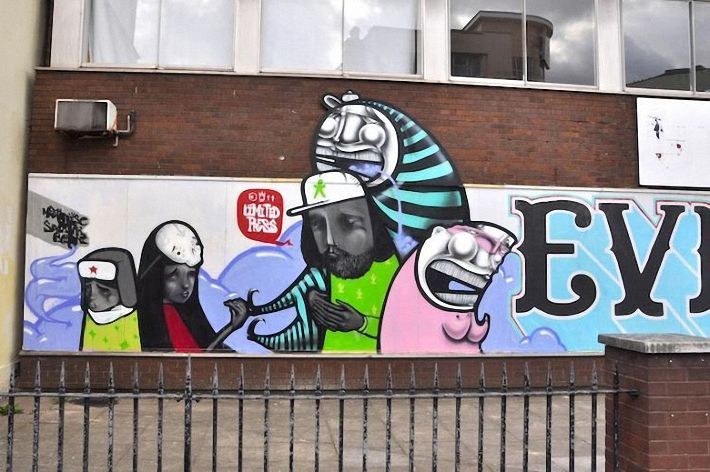|
|
Street Art Graffiti Murals
|
Secco painting is done on dry plaster (secco is "dry" in Italian). The pigments thus require a binding medium, such as egg (tempera), glue or oil to attach the pigment to the wall.
Mezzo-fresco is painted on nearly-dry plaster was defined by the sixteenth-century author Ignazio Pozzo as "firm enough not to take a thumb-print" so that the pigment only penetrates slightly into the plaster. By the end of the sixteenth century this had largely displaced the buon fresco method, and was used by painters such as Gianbattista Tiepolo or Michelangelo. This technique had, in reduced form, the advantages of a secco work.
• Material
In Greco-Roman times, mostly encaustic colors ground in a molten beeswax or resin binder and applied in a hot state was used.
|
|









